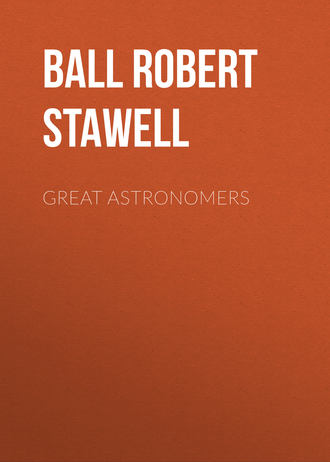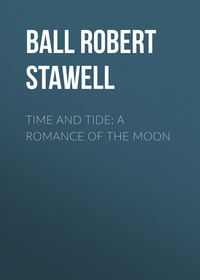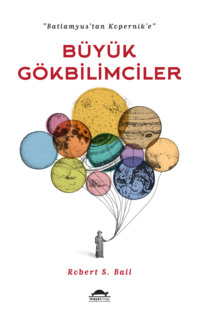 полная версия
полная версияGreat Astronomers
There is a continuous advance in the date of this meteoric shower. The meteors now cross our track at the point occupied by the earth on November 13th, but this point is gradually altering. The only influence known to us which could account for the continuous change in the plane of the meteor's orbit arises from the attraction of the various planets. The problem to be solved may therefore be attacked in this manner. A specified amount of change in the plane of the orbit of the meteors is known to arise, and the changes which ought to result from the attraction of the planets can be computed for each of the five possible orbits, in one of which it is certain that the meteors must revolve. Professor Adams undertook the work. Its difficulty principally arises from the high eccentricity of the largest of the orbits, which renders the more ordinary methods of calculation inapplicable. After some months of arduous labour the work was completed, and in April, 1867, Adams announced his solution of the problem. He showed that if the meteors revolved in the largest of the five orbits, with the periodic time of thirty three and one quarter years, the perturbations of Jupiter would account for a change to the extent of twenty minutes of arc in the point in which the orbit crosses the earth's track. The attraction of Saturn would augment this by seven minutes, and Uranus would add one minute more, while the influence of the Earth and of the other planets would be inappreciable. The accumulated effect is thus twenty-eight minutes, which is practically coincident with the observed value as determined by Professor Newton from an examination of all the showers of which there is any historical record. Having thus showed that the great orbit was a possible path for the meteors, Adams next proved that no one of the other four orbits would be disturbed in the same manner. Indeed, it appeared that not half the observed amount of change could arise in any orbit except in that one with the long period. Thus was brought to completion the interesting research which demonstrated the true relation of the meteor swarm to the solar system.
Besides those memorable scientific labours with which his attention was so largely engaged, Professor Adams found time for much other study. He occasionally allowed himself to undertake as a relaxation some pieces of numerical calculation, so tremendously long that we can only look on them with astonishment. He has calculated certain important mathematical constants accurately to more than two hundred places of decimals. He was a diligent reader of works on history, geology, and botany, and his arduous labours were often beguiled by novels, of which, like many other great men, he was very fond. He had also the taste of a collector, and he brought together about eight hundred volumes of early printed works, many of considerable rarity and value. As to his personal character, I may quote the words of Dr. Glaisher when he says, "Strangers who first met him were invariably struck by his simple and unaffected manner. He was a delightful companion, always cheerful and genial, showing in society but few traces of his really shy and retiring disposition. His nature was sympathetic and generous, and in few men have the moral and intellectual qualities been more perfectly balanced."
In 1863 he married the daughter of Haliday Bruce, Esq., of Dublin and up to the close of his life he lived at the Cambridge Observatory, pursuing his mathematical work and enjoying the society of his friends.
He died, after a long illness, on 21st January, 1892, and was interred in St. Giles's Cemetery, on the Huntingdon Road, Cambridge.
1
Considering the fame acquired by Parsonstown from Lord Rosse's mirrors, it may be interesting to note the following extract from "The Natural History of Ireland," by Dr. Gerard Boate, Thomas Molyneux M.D., F.R.S., and others, which shows that 150 years ago Parsonstown was famous for its glass:—
"We shall conclude this chapter with the glass, there having been several glasshouses set up by the English in Ireland, none in Dublin or other cities, but all of them in the country; amongst which the principal was that of Birre, a market town, otherwise called Parsonstown, after one Sir Lawrence Parsons, who, having purchased that lordship, built a goodly house upon it; his son William Parsons having succeeded him in the possession of it; which town is situate in Queen's County, about fifty miles (Irish) to the southwest of Dublin, upon the borders of the two provinces of Leinster and Munster; from this place Dublin was furnished with all sorts of window and drinking glasses, and such other as commonly are in use. One part of the materials, viz., the sand, they had out of England; the other, to wit the ashes, they made in the place of ash-tree, and used no other. The chiefest difficulty was to get the clay for the pots to melt the materials in; this they had out of the north."—Chap. XXI., Sect. VIII. "Of the Glass made in Ireland."





